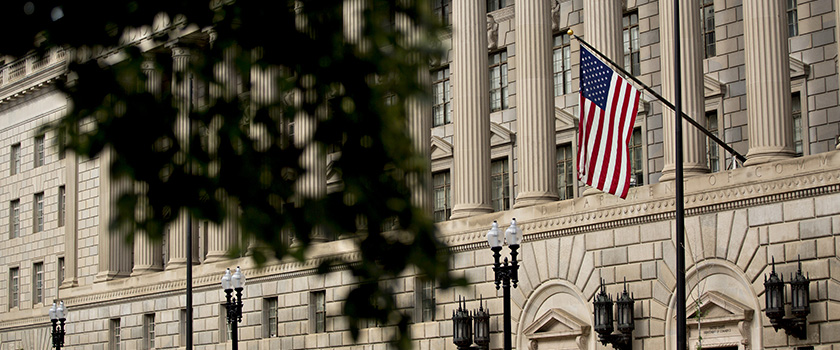The global economy remains resilient despite negative momentum in Q1 & Q2. UBP’s economists Patrice Gautry and Carlos Casanova take a tour of the macro scenario around the world.
US: Softer growth expected in 2022
GDP growth is now expected around 3% in 2022, having been slow in Q1 due to subdued consumption under the residual effects of omicron and rising inflation. Reduced visibility and volatile economic indicators are fuelling downside risks that will weigh on Q2 growth, while a better outlook is expected in the second half of the year.
Consumers face high inflation and deteriorating purchasing power this quarter, but employment is expected to remain on a positive trend despite ongoing uncertainties, as is wage growth. Retail sales are likely to remain highly volatile, as saving should only partly make up for the losses in consumers’ real income.
The supply sector having showed some resilience and modest improvement at year end, business confidence indicators remain high across sectors and regions, though more volatile. Activity in the energy sector in particular is benefiting from high prices.
The outlook for capex remains solid, although low visibility and renewed disruptions in manufacturing and trade may affect companies’ plans to expand in the second half of this year. Meanwhile, previously confirmed infrastructure spending projects going ahead should support the trend.
The housing sector is being supported by strong demand despite the hurdle of higher interest rates. However, a slowdown is expected later in the year as the Fed’s balance sheet reduction may impact mortgage interest rates.
Economic policy has turned less supportive of growth, and fiscal measures such as cuts to state gas taxes to mitigate the weight of rising energy prices on consumers’ budgets are still only at the stage of proposals.
Asia: Facing inflation and geopolitical developments
Efforts to reach China’s ambitious targets led by public investment and manufacturing
We expect China’s growth to reach 5.0% in 2022 and 4.5% in 2023. Q1-22 should mark the weakest quarter since 2020, with GDP growth declining to 3.0% y/y (prior: 4.0%).
Yet Beijing has set an ambitious growth target of 5.5%, requiring GDP to increase to 6.5% in the remainder of 2022. In the past China has only twice narrowly missed its growth targets, by 0.1%, in 2014 and 2015 (no target was announced in 2020).
This shift requires policy support in the form of PBOC easing, an augmented fiscal deficit of 10% and CNY 2.5 trillion (approximately 3% of GDP) in tax cuts for businesses. Growth is to be led by public investment and manufacturing. Fixed asset investments (FAI) had rebounded by 12.2% y/y in January–February, but domestic consumption will take longer given disruptions associated with the “zero-Covid” policy.
Our risk scenario of 3.1% in 2022 could materialise if omicron cases increase exponentially, geopolitical tensions result in broad-based secondary sanctions, or inflation overshoots expectations.
Broader Asia: Shifts in stance and rising oil prices
On a GDP-weighted basis, Asia’s growth is expected to slow to 4.5% in 2022, down from 6.2% in 2021.
Asian inflation was subdued in 2021 when measured on a GDP-weighted basis, remaining below its long-term average. However, we expect that oil prices will make it rise starting in 2022, with CPI gradually increasing to 3.0%. This is assuming that oil prices remain elevated but relatively stable around USD 110–120 per barrel, but if they overshoot the forecast, inflation would do so too.
Rising inflation and rising US bond yields will drive outflows of capital from Asia. Not only will this contribute to tighter domestic liquidity conditions, but it will also put pressure on central banks to implement pro-cyclical rate hikes, thereby hindering the economic recovery.
Developed markets have already started their tapering process, led by Korea, Singapore, Australia, New Zealand and Hong Kong, which need to follow the Fed. Amongst the region’s emerging markets, we expect rate hikes in India, the Philippines and Malaysia in Q2-22.
The pace of tapering in 2022 remains dependent on specific domestic conditions, but most Asian economies will likely opt to taper more slowly than the Fed.
Eurozone: Major downside risks on growth
After a strong rebound in 2021, growth in the eurozone is expected to weaken in the first half of 2022 due to geopolitical uncertainties, higher energy costs and renewed disruption in several sectors.
The 2022 growth outlook has been revised down, from 4% initially expected to 2%. The downtrend is already starting in H1, driven by the heavy burdens of rising energy costs and weaker demand, notably from households. Recession risks will keep increasing as long as oil prices rise and the conflict to the East continues. The worst-case scenario would be a halt to energy imports from Russia, leading to sharp contractions in Germany and Italy.
If geopolitical pressures and oil prices stabilise, economic activity could recover in H2-22 limiting the negative impacts on growth and sentiment. Developments in Q2 will be key for the 2022 scenario but visibility is low and uncertainties high.
While disruption in manufacturing eased somewhat at the end of 2021, the conflict may generate another wave of disorganisation, affecting energy and several materials and consumer goods sectors.
While monetary policy is no longer accommodative, budgetary spending is set to continue expanding sharply in 2022 in order to mitigate the negative shocks on both consumers and related sectors.
In addition to its long-term plan to reduce its dependency on Russia, the EU is expected to adopt measures (costing 1.5% of GDP) to strengthen its economy’s resilience during conflicts and accelerate strategic mutations.
While Germany has already abandoned several of its historic positions on defence and budget, the EU could benefit from ongoing political leadership from France and Italy, as well as the new German coalition.
Russia: A severe recession in sight
The conflict in Ukraine has led to wider Western sanctions than in 2014 on Russia’s exports, finance (SWIFT) sector, and specific Russian people. The effect of these combined measures should hit the country’s economic activity by at least 10%.
Oil and gas exports from Russia could continue in the short run at a moderate pace despite the sanctions, while the economic impact on Russia of the conflict should be seen in higher inflation, weakening purchasing power and consumption, and a related slowdown in non-energy sectors, with rising unemployment.
While commodity exports could continue to benefit from higher spot prices, other exports could be limited, except those towards China. Developed countries have limited their exports to Russia of IT equipment, aircraft parts, and goods in other “sensitive” sectors.
The financial sanctions, a falling currency, and rising key rates (20%) could create a credit crunch in Russia, adding constraints on deliveries and payments of goods, and pressures on the financial system such as a bank run.
Domestic demand should fall sharply in 2022 but the latest indicators have not yet registered the full negative shock. A sharp recession of between -15% and -7% is expected in 2022, associated with a 15–25% inflation rate.
Russia had a relatively solid external fund positioning before the military action in Ukraine. The full costs of this conflict for the budget and refinancing remain unclear.










